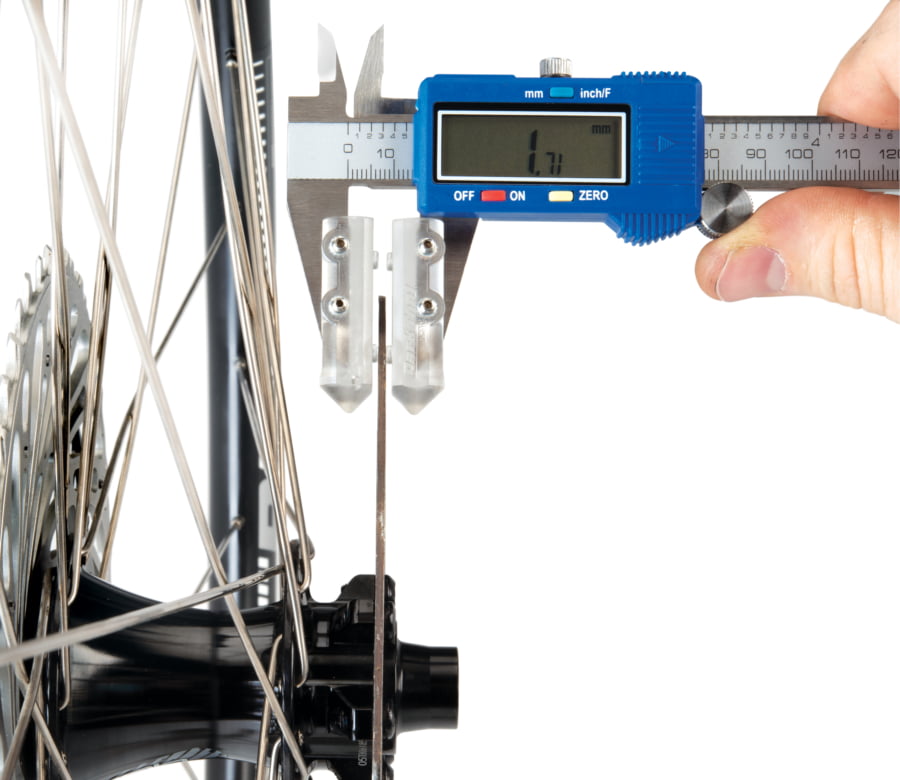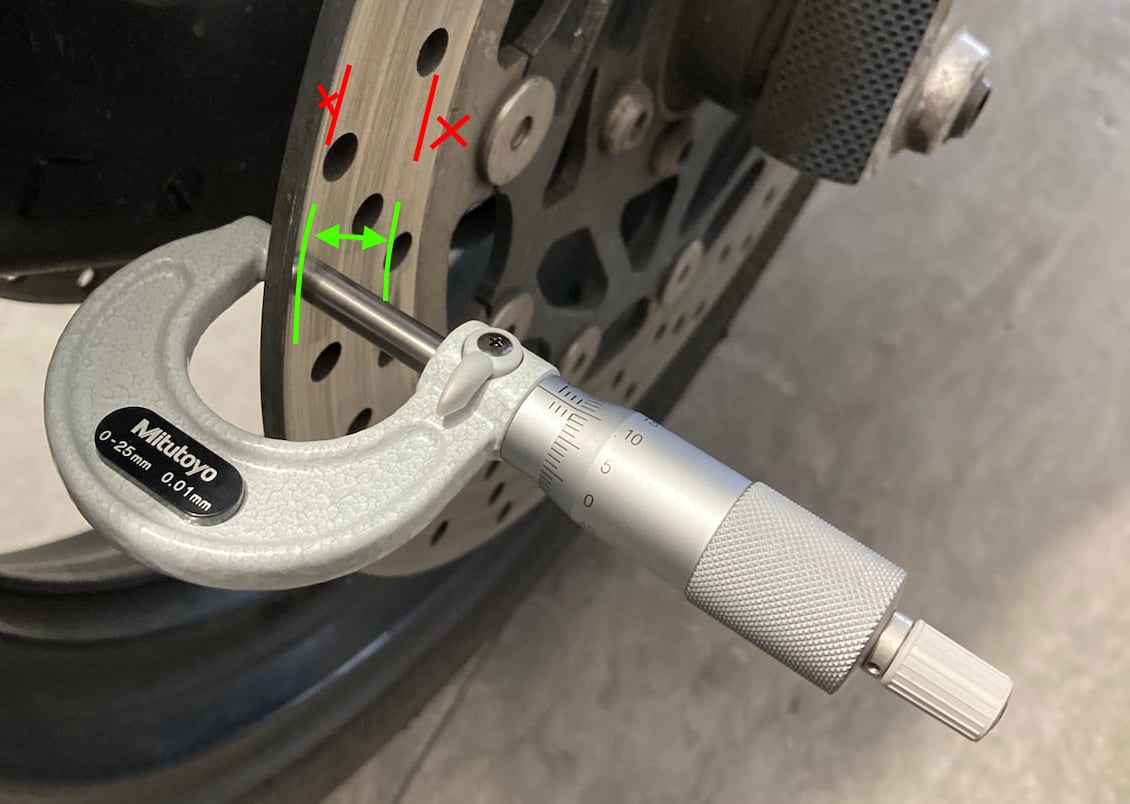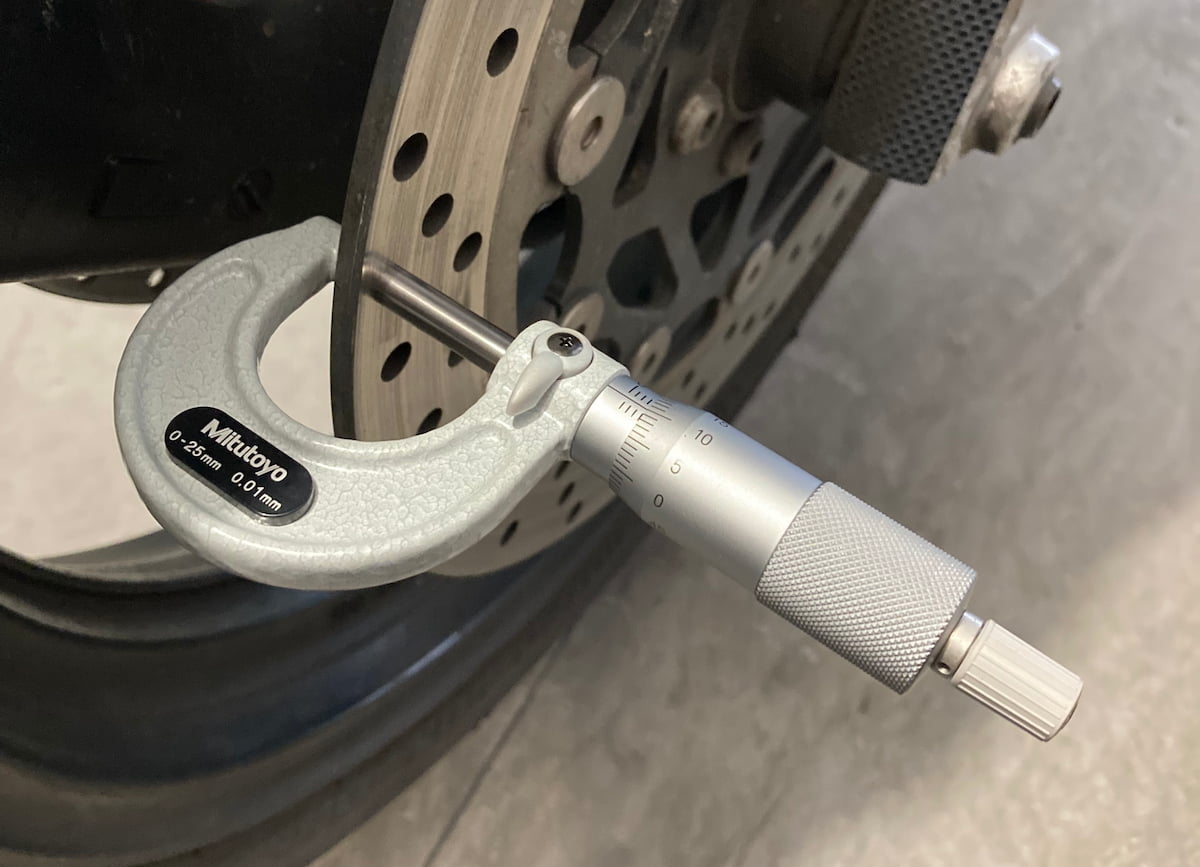Bicycle brake discs (“rotors”) wear when you brake, and should be replaced once they get too thin. At which thickness should you replace them and how to measure that?
In a separate article, I’ve explained when to replace disc brake pads.
(yes, the header photo is from my motorcycle, but the measuring principle is the same 🙂 )
1. Recommendations – in brief
Below, I’ve listed the manufacturer recommendations. This is my opinion, based on my knowledge, education, and experience:
You should replace your discs when the area where the pads are dragging against gets thinned down to 1.5 mm.
2. Manufacturer recommendations
Basically everyone recommends replacement at about 1.5 mm except Magura who recommend at 1.8 mm (their discs are thicker). However, since people often ask, to be sure, I will list the recommendations per manufacturer – explicitly:
- Shimano: minimum safe disc thickness is 1.5 mm.
- SRAM and Avid: 1.55 mm.
- Magura: 1.8 mm (new Magura discs are thicker than most other manufacturers’ – at 2 mm, compared to the usual 1.8 mm).
- Hope: 1.5 mm.
- TRP: 1.5 mm.
- Formula: 1.5 mm.
3. How to measure disc (rotor) thickness?
It’s important to know that discs often don’t wear from the very outer edge of the rim. The pads often slide about 1 mm away from the very outer edge, and that’s where the discs wear.
That’s why you should measure the disc thickness at the section where the pads are.
You can do that by using caliper adapters – either making them yourself, or using the Park Tool DCA-1 (Amazon affiliate link):

You could also use a micrometer – as I did with my motorcycle brake discs here:

The area marked with green is where the pads go, so that’s where I’m measuring.
4. Extra tips
Don’t wait for a problem to happen. Check the disc thickness on a regular basis (definitely when you are replacing the brake pads).
Don’t contaminate the discs with grease or oil (using greasy tools or hands on them).
In separate articles, I’ve explained:
- How to stop disc brake squeaking
- How to fix disc brake rubbing
- Disc vs rim bicycle brakes – pros and cons
Last updated:
Originally published:

